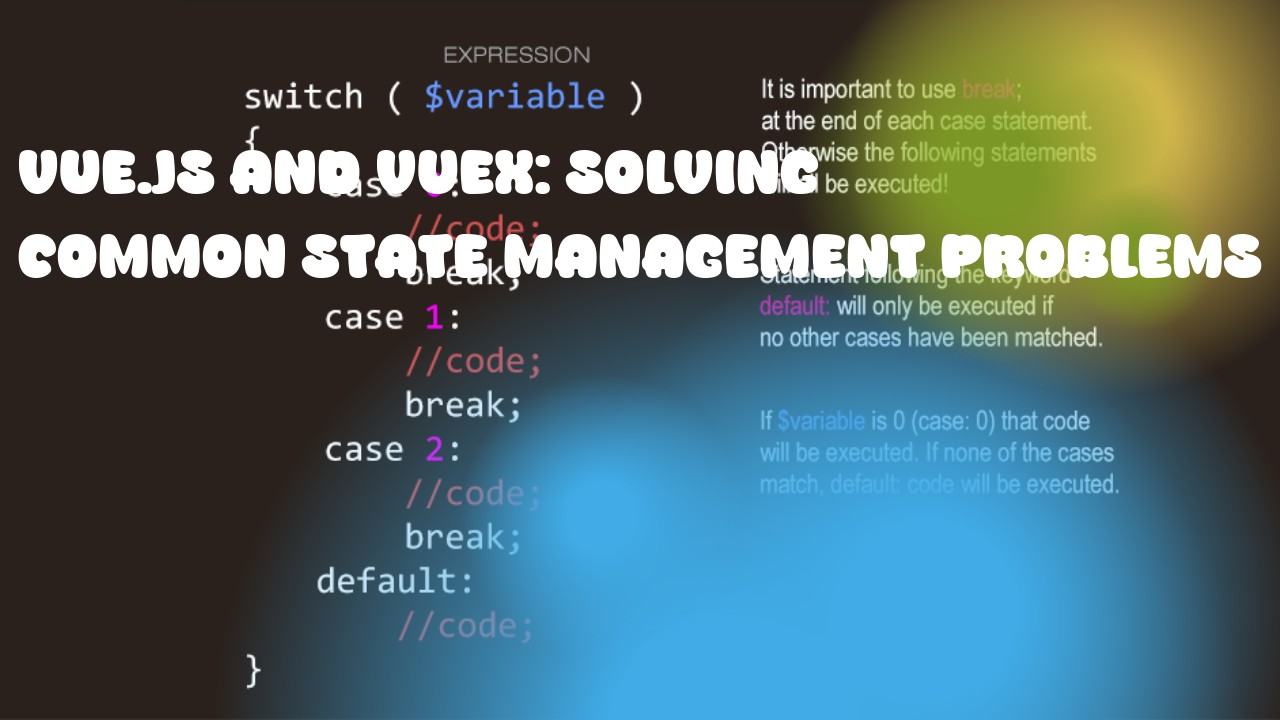In Vue.js, using Vuex is essential for managing complex state in an application. It offers several advantages over simpler state management solutions such as props drilling and event emitters. In this article, we'll discuss common state management problems that arise when developing large applications with Vue.js and how to solve them using Vuex.
- Lack of Global State: One common problem developers face when building an application in Vue.js is the lack of a global state object that can be accessed from any component. With Vuex, you can create a store where you can define all of your app's state and then access it anywhere in your components.
Example code:
// Store file (store/index.js)
import Vue from 'vue'
import Vuex from 'vuex'
Vue.use(Vuex)
export default new Vuex.Store({
state: {
user: null,
cart: [],
products: []
},
mutations: {
SET_USER (state, user) {
state.user = user;
}
},
actions: {
fetchUser ({ commit }) {
axios.get('/api/user')
.then(response => commit('SET_USER', response.data))
}
},
getters: {
isLoggedIn: state => !!state.user
}
})
// App component (src/App.vue)
<template>
<div id="app">
<router-view />
</div>
</template>
<script>
import { mapGetters } from 'vuex'
export default {
computed: {
...mapGetters(['isLoggedIn'])
}
}
</script>
- State Mutations and Actions: In Vue.js, state is mutable directly within the component. However, if you need to perform complex operations on your state (like adding or removing items from an array), it's recommended to use mutations and actions in Vuex. Mutations are used for updating the state directly, while actions commit mutations.
Example code:
// Actions file (store/actions.js)
export default {
addToCart ({ commit }, product) {
commit('ADD_TO_CART', product);
}
}
// Mutations file (store/mutations.js)
export default {
ADD_TO_CART (state, product) {
state.cart.push(product);
}
}
// Component using action (src/components/ProductDetail.vue)
<template>
<button @click="addToCart">Add to Cart</button>
</template>
<script>
import { mapActions } from 'vuex'
export default {
methods: {
...mapActions(['addToCart'])
}
}
</script>
- Prop drilling and Event Emitters: One of the biggest challenges with Vue.js is prop drilling, where you have to pass props from one component to another, and so on, until you reach the component that needs the data. Additionally, event emitters can be confusing when you need to handle events from multiple child components.
Vuex solves these problems by providing a centralized store for your app's state, along with methods for updating it (mutations) and fetching it (actions). With Vuex, you can easily manage state across the entire application, reducing prop drilling and making event emitters easier to handle.

